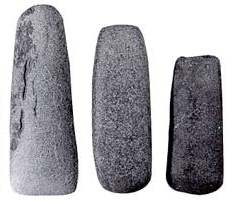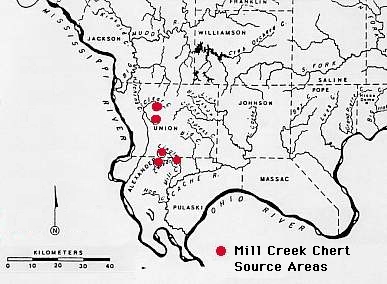
Celts made from glacial cobbles, Lohmann site.
Mississippians were much more selective about the raw materials used for other lithic tools, however. Hoes, for example, needed to be durable, able to withstand long continuous use, and they needed to be easily repaired. Not surprisingly then, Mississippian agriculturalists fashioned their hoes from a particularly tabular, fine-grained chert with few flaws, the Mill Creek chert from what is now southern Illinois. Apparently the tabular nature of the Mill Creek chert made it particularly suitable for manufacture of large bifaces.
Most stones used as metates and manos, and much of the chert for simple flake tools came from nearby sources. It is likely that the rocky beds of streams where they spilled out of the uplands into the valley were particularly important places for acquisition of needed lithic material. Nodules accumulating here include cherts previously eroded from the nearby limestone bedrock, and a variety of rocks derived from the glacial tills lying between the surficial loess deposits and bedrock in the uplands.
